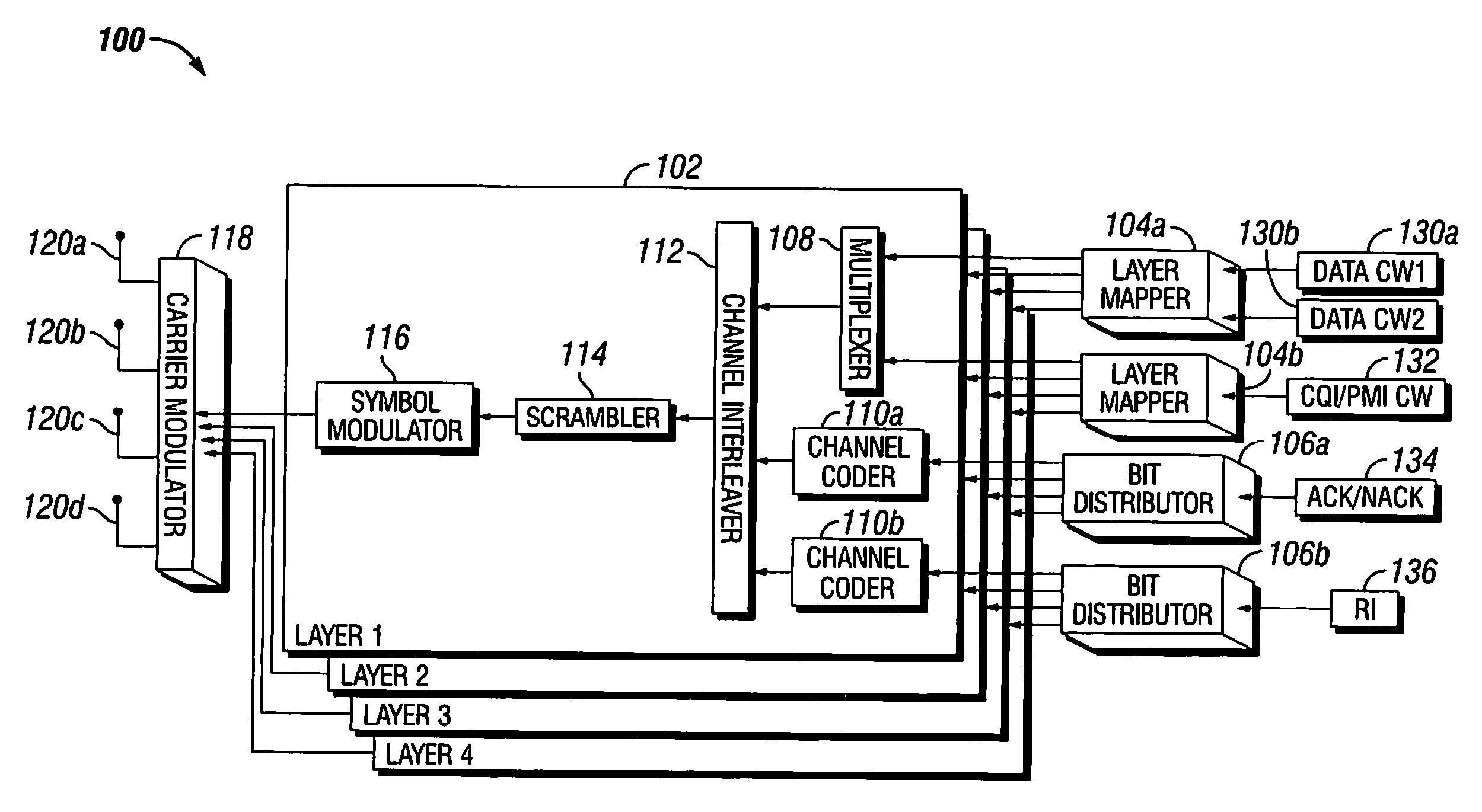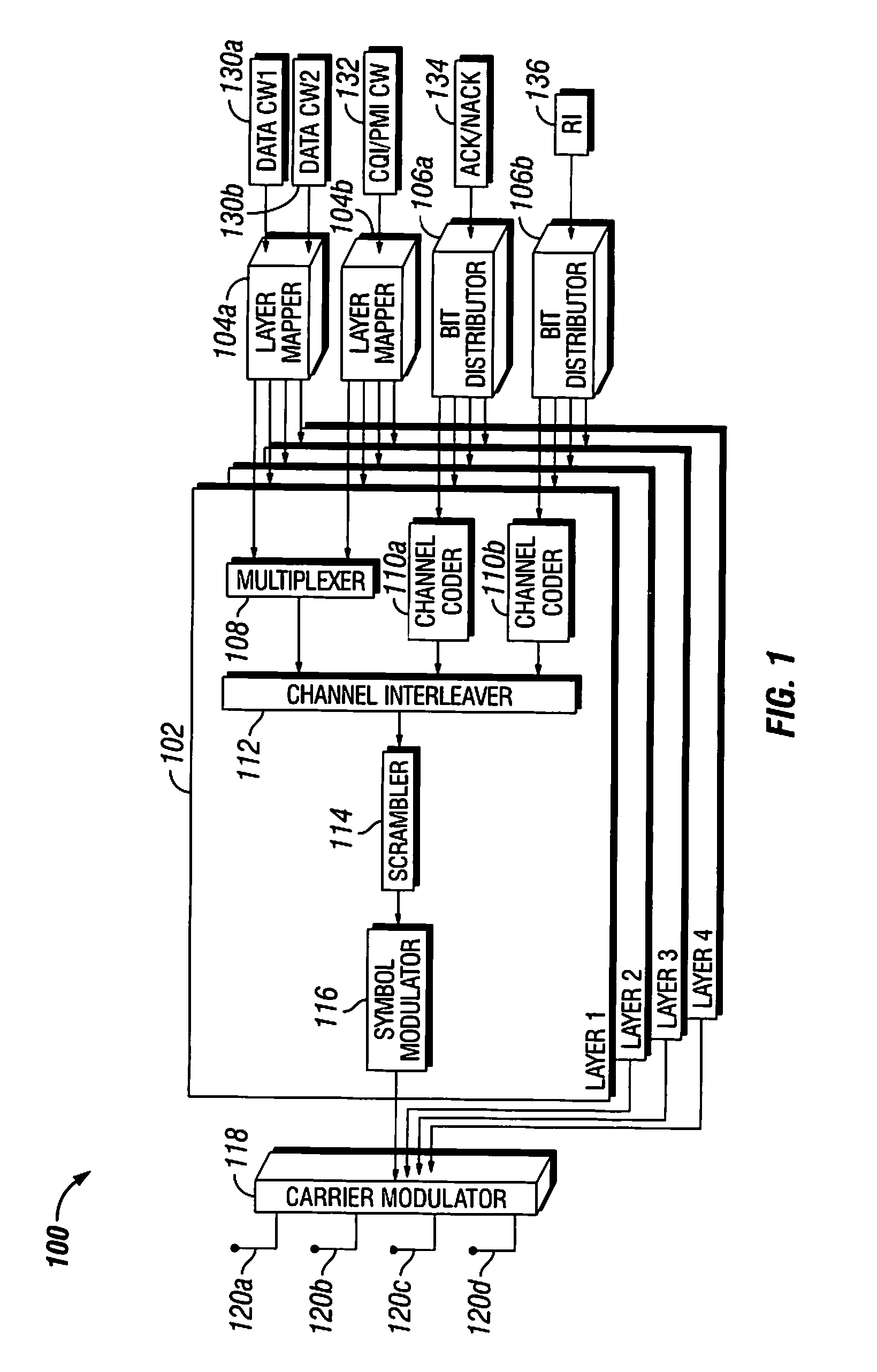System and method for allocating transmission resources
a transmission resource and resource allocation technology, applied in the field of wireless communication, can solve the problems of increasing the complexity of managing radio channels, failing to provide optimal allocation of transmission resources between control information, etc., and achieve the effect of simplifying the processing of multi-antenna transmissions and increasing the benefits of transmission diversity
- Summary
- Abstract
- Description
- Claims
- Application Information
AI Technical Summary
Benefits of technology
Problems solved by technology
Method used
Image
Examples
Embodiment Construction
[0021]FIG. 1 is a functional block diagram illustrating a particular embodiment of a multi-antenna transmitter 100. In particular, FIG. 1 shows a transmitter 100 configured to multiplex certain control signaling with user data for transmission over a single radio channel. By intelligently implementing the coding, interleaving, layer mapping, and other aspects of the transmission, transmitter 100 may be able to improve upon the resulting allocation of user data and control signaling to transmission resources, as described further below.
[0022]Control signaling can have a critical impact on the performance of wireless communication systems. As used herein, “control signaling” and “control information” refers to any information communicated between components for purposes of establishing communication, any parameters to be used by one or both of the components in communicating with one another (e.g., parameters relating to modulation, encoding schemes, antenna configurations), any infor...
PUM
 Login to View More
Login to View More Abstract
Description
Claims
Application Information
 Login to View More
Login to View More - R&D
- Intellectual Property
- Life Sciences
- Materials
- Tech Scout
- Unparalleled Data Quality
- Higher Quality Content
- 60% Fewer Hallucinations
Browse by: Latest US Patents, China's latest patents, Technical Efficacy Thesaurus, Application Domain, Technology Topic, Popular Technical Reports.
© 2025 PatSnap. All rights reserved.Legal|Privacy policy|Modern Slavery Act Transparency Statement|Sitemap|About US| Contact US: help@patsnap.com



